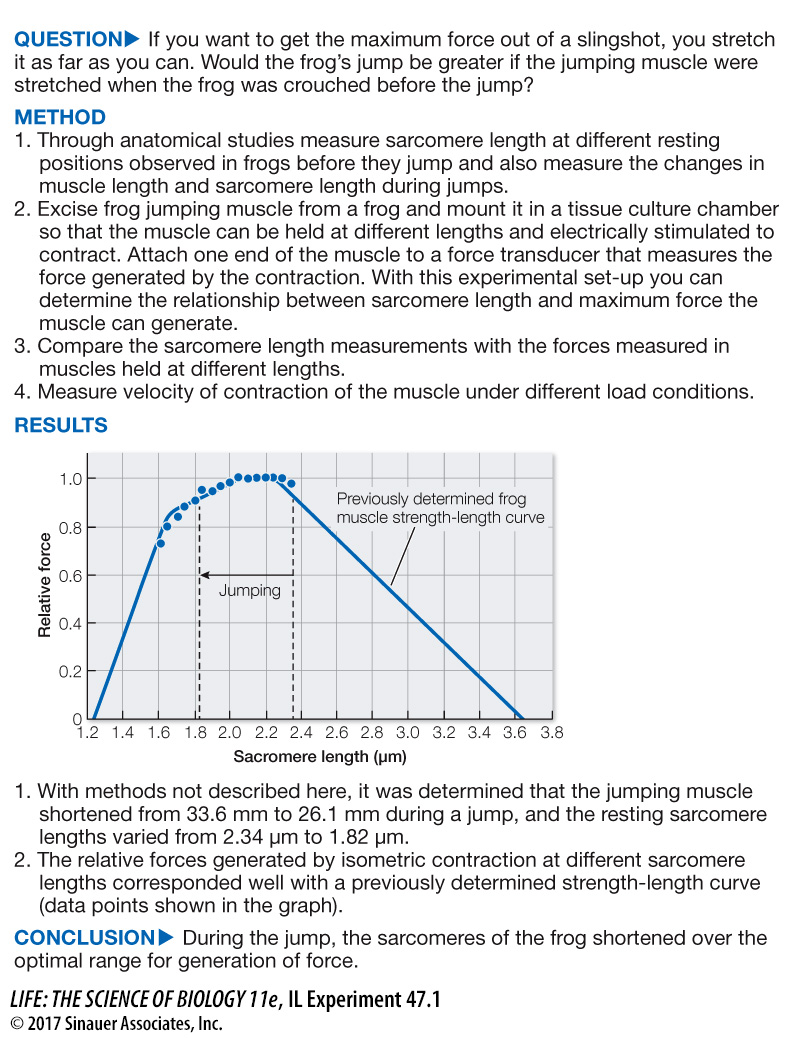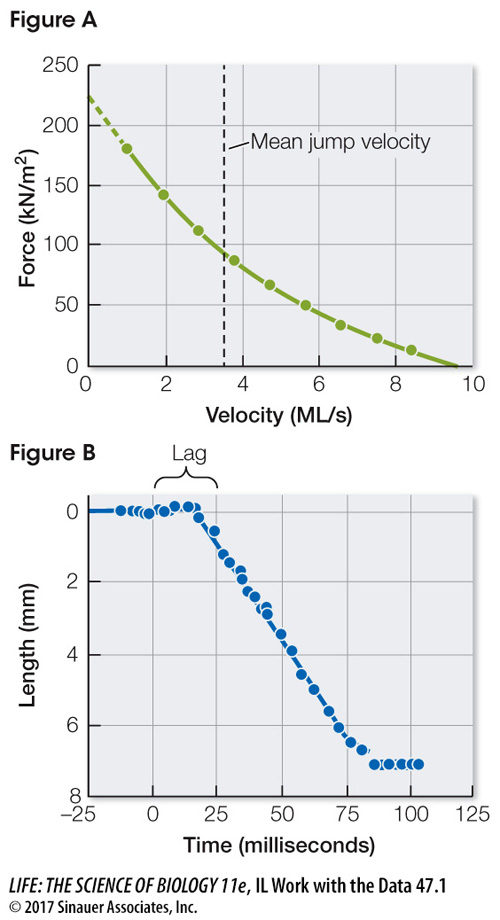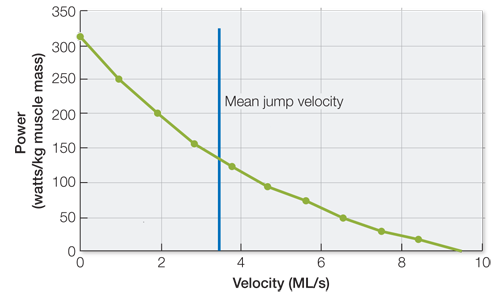A muscle has an optimal length for generating maximum tension
Two parts of a pull-
When a muscle changes length the sarcomeres also change length, and the spatial relationships between the actin and myosin filaments changes (Figure 47.12). If there is no actin–

investigating life
What Is the Optimal Resting Position for the Jumping Muscle of the Frog?
experiment
Original Paper: Lutz, G. J. and L. C. Rome. 1994. Built for jumping: The design of the frog muscular system. Science 263: 370–
The force propelling a frog’s jump should be greatest when there is optimal overlap between the actin and myosin filaments and not when the muscle is stretched. The following experiment attempted to determine the resting sarcomere length that allows a frog to achieve a maximal jump.

work with the data
The resting position of the sarcomeres and the extent of their shortening during a jump maximize the force that the frog’s muscle can generate to power the jump. But in physical terms, power is a force applied over a specific time. Therefore the velocity of contraction (measured as muscle length/second [ML/s]) will influence the maximum power the muscle can generate, and the velocity of contraction depends on the load. If the load is too great, the contraction is isometric (velocity = 0). If the load is negligible, the velocity of contraction can be maximal. Figure A shows the relationship between force and velocity of contraction in a frog jumping muscle under different loads. The mean jump velocity is indicated. Figure B shows the change in muscle length (mm) during a jump (milliseconds).

QUESTIONS
1.
Power is work/time and work is force × displacement. Displacement/time = velocity. Therefore power = force × velocity. Using the data in Figure A, plot a curve that shows power as a function of contraction velocity for the frog muscle.

2.
What is the velocity of contraction of the frog jumping muscle in muscle lengths/sec? Use the data in Figure B.
The jump takes 50 ms (see Figure B), and the shortening in terms of muscle lengths is 7.5 mm/33.6 mm = 0.22 ML. So, velocity of muscle contraction in ML/sec = 0.22/.05 sec = 4.4.
3.
Is the speed and force of the frog muscle optimal for generating the most powerful jump?
The power generated by the jumping muscle is maximal at the observed mean jumping velocity.
A similar work with the data exercise may be assigned in LaunchPad.